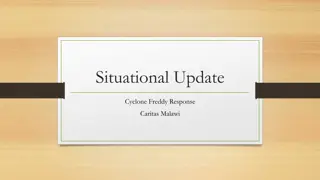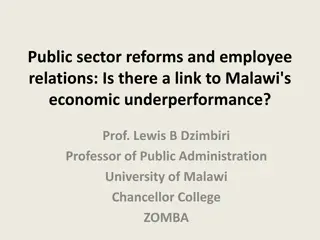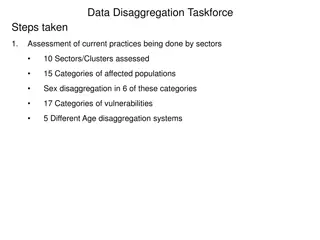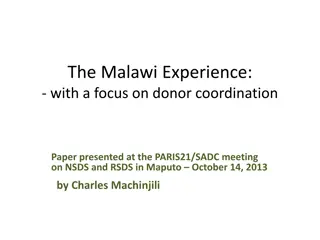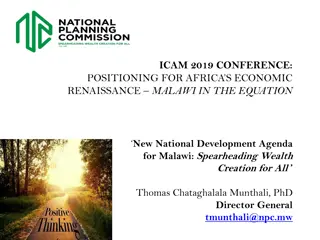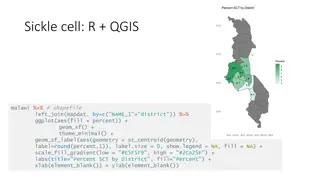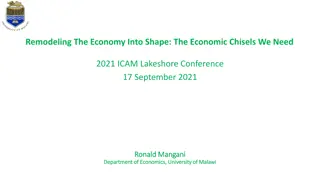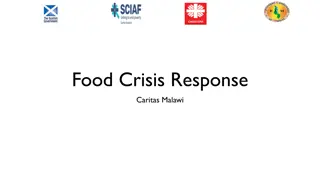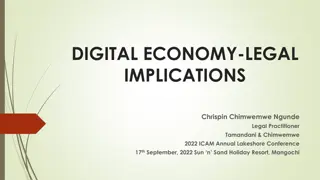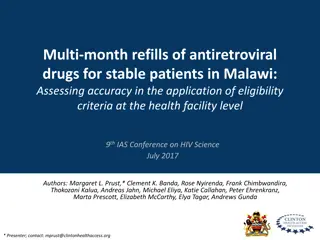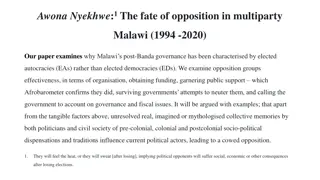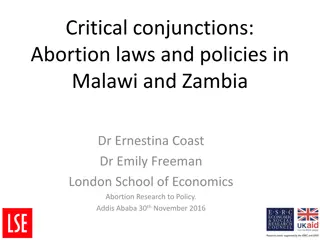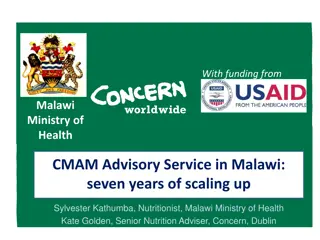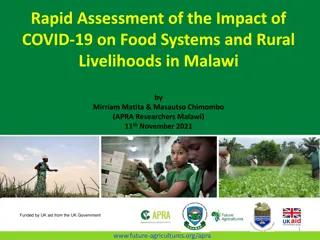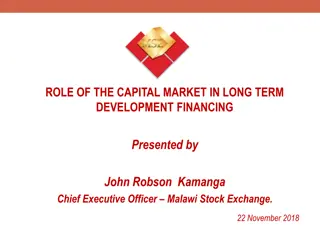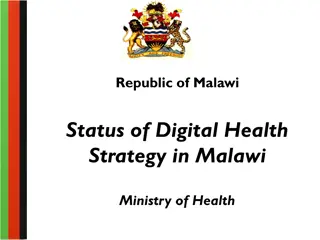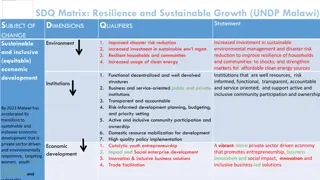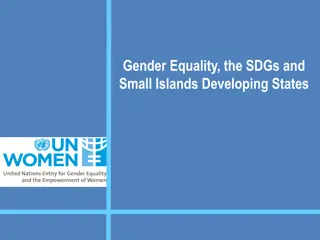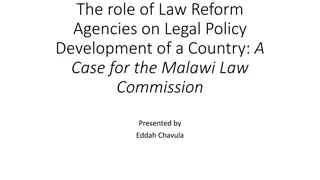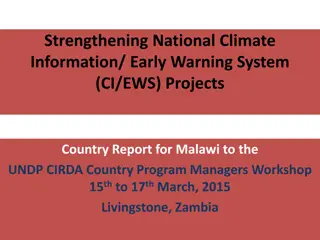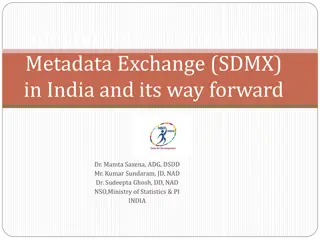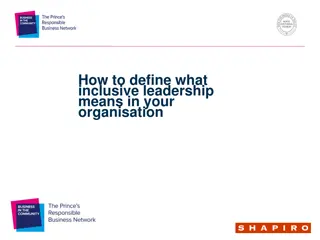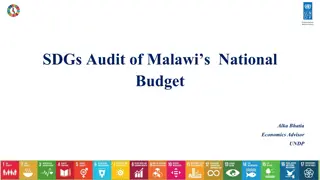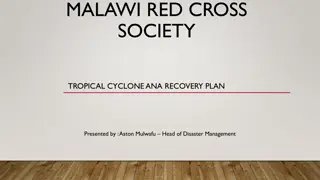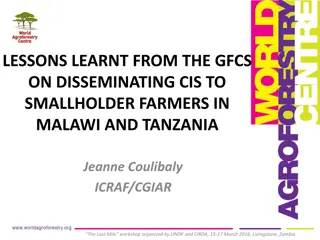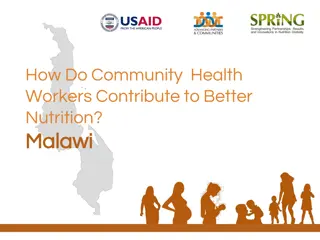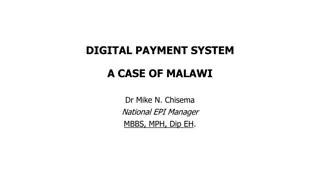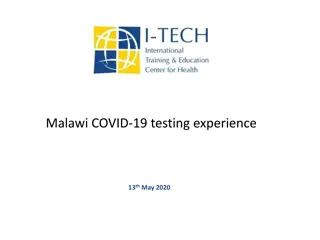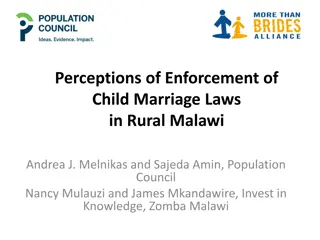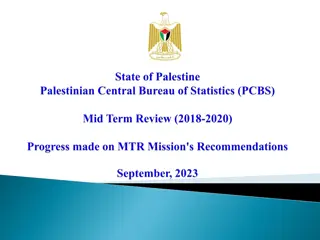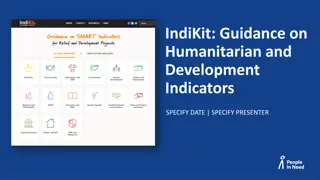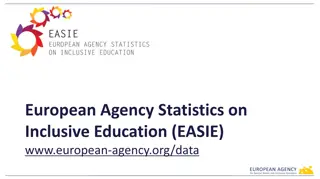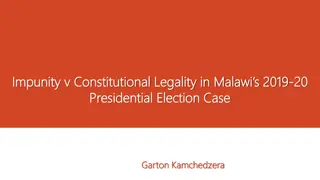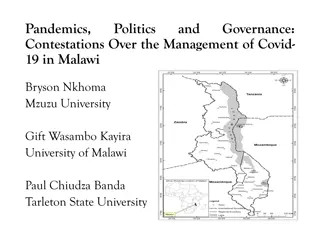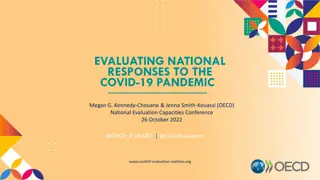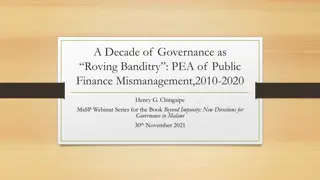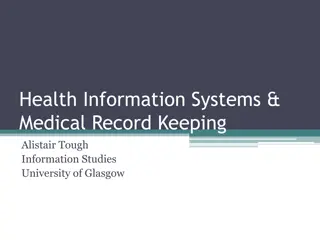Enhancing Data Disaggregation for Inclusive Development: NSO Malawi Presentation
The National Statistics Office (NSO) of Malawi plays a crucial role in collecting, analyzing, and disseminating official statistics for evidence-based policy formulation. This presentation covers the background of NSO, data sources including censuses and surveys, and challenges faced in data disaggregation. NSO empowers statistical information use and raises public awareness. Various administrative data sources are utilized, focusing on achieving the Sustainable Development Goals (SDGs) and leaving no one behind.
- NSO Malawi
- Data Disaggregation
- Official Statistics
- Sustainable Development Goals
- Inclusive Development
Download Presentation

Please find below an Image/Link to download the presentation.
The content on the website is provided AS IS for your information and personal use only. It may not be sold, licensed, or shared on other websites without obtaining consent from the author. Download presentation by click this link. If you encounter any issues during the download, it is possible that the publisher has removed the file from their server.
E N D
Presentation Transcript
PRESENTATION ON DATA DISSAGREGATION BY NSO, MALAWI SOGECOA GOLDEN PEACOCK HOTEL 27THSEPTEMBER 2017
Content BACKGROUND DATA SOURCES SDGs .LEAVING NO ONE BEHIND CHALLENGES CONCLUSION
Background The National Statistics Office (NSO) is a government department which was established in 1963 and mandated under the 1967 Statistics Act of parliament which was revised in 2013 The Statistics Act mandates NSO to collect, analyse, publish and disseminate official statistics for evidence based policy formulation, decision making and monitoring and evaluation of development programs
Background, Contd 4 The Act also empowers NSO to raise public awareness about the importance and the role of statistical information and promote the use of best practices and international standards in statistical production, management and dissemination. The Act also empowers Commissioner of NSO to be in charge of the National Statistical System that promotes methodological excellence and standards in the data collection by MDAs 10/2/2024
Data sources 5 The NSO runs a 10 year cycle of censuses and surveys with the Population and Housing Census at each end of the cycle. Latest examples are: Malawi Demographic Health Survey (MDHS) 2015- 2016 Welfare Monitoring Survey (WMS) 2014 Integrated Household survey 2016 2017 Survey on Aging 2017 10/2/2024
Data sources, Contd 6 Listening to Malawi Mobile Survey Economic Surveys Industrial surveys Monthly Pricing Surveys Data is collected at District level and analyzed at Regional level, rural-urban and cities 10/2/2024
Data sources, Contd 7 Administrative data sources Customs data - Foreign Trade Immigration data from Exit Cards Ministry Education Education Management Information System (EMIS) Ministry of Health Health Management Information System (HMIS) Government Expenditure data Labour statistics Labour Market Information System (LMIS) 10/2/2024
SDGs...Leaving No one behind 8 The 2018 PHC has included several questions on disability which came from the Disability experts including questions from the Washington Group on Disability Also covered under Disability Module are: Questions on (age, sex, religion, tribe, among others) Plus question on Albinism Plus Questions on the Youth and the Aging 10/2/2024
SDGsLeaving No one behind, Contd 9 Homeless, street kids, Institutions, including orphanages In the 2018 Population and Housing Census, the smallest unit of analysis is the village 10/2/2024
SDGs...Leaving No one behind, Contd 10 Aging NSO conducted a survey on aging From Multiple Indicator Cluster Survey (MICS), there was an in-depth analysis on the aging and there is a whole report 10/2/2024
Challenges 11 Respondent fatigue as result of many, usually unstreamlined, surveys being conducted using long questionnaires Likelihood of administrative data not conforming to formats required by data users because of different objectives of data collection Lack of cooperation from some data providers, response rates declining in some sectors (e.g. industrial data) Disaggregation of some of the Economic Indicators such as GDP, PPI IIP 10/2/2024
Conclusion 12 Data disaggregation is work in progress Cost of collecting and analyzing that data is high, requiring more commitment in terms of support from Government and Development Partners Need for more data which most NSOs would not be able to handle alone; more new partnerships with open data producers will be required to certify collected data as official NSO will guide producers of administrative data so that its use can be enhanced 10/2/2024
13 I THANK YOU FOR YOUR ATTENTION 10/2/2024


